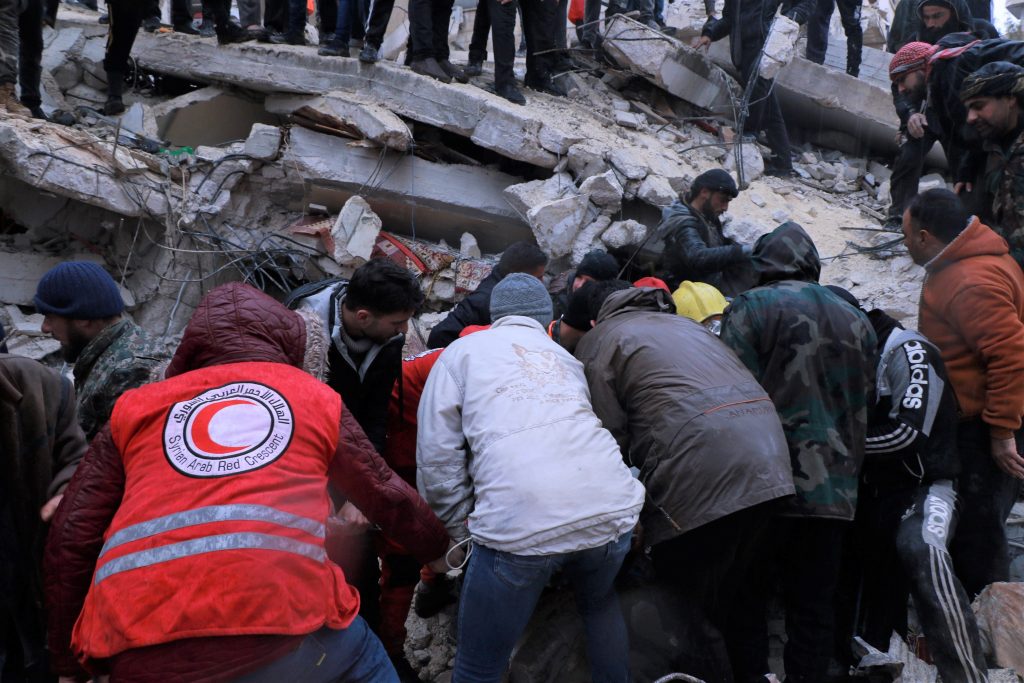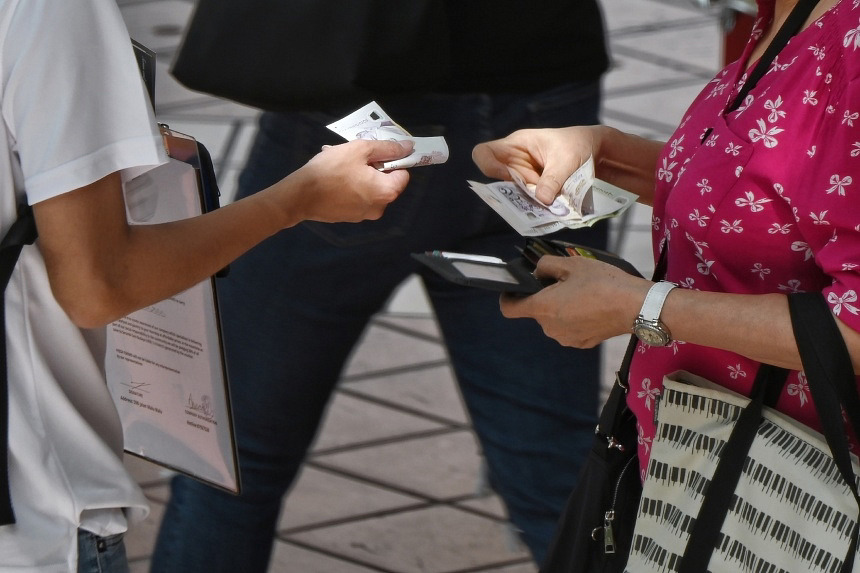Helping Earthquake Victims in Türkiye and Syria: Ways to Donate


The earthquake that struck Türkiye and Syria on 6 February 2023 has become one of the top 10 deadliest earthquakes ever. Over 41,0001 people have been killed (as of 15 February), a death toll the United Nations expects will eventually exceed 50,0002. The 7.8 magnitude earthquake occurred near the border of the two countries. Since then, more than 2,000 aftershocks have pummelled the devastated region.
The widespread damage to buildings and infrastructure has left millions of people without homes, access to clean water, and basic necessities. The disaster has also led to countless casualties and injuries. First responders from all over the world are working tirelessly to save lives. However, with each passing day, the focus is turning from search and rescue to helping the survivors in desperate need of aid.
Local authorities and international aid groups have rushed to mobilise humanitarian aid, including food, shelter, medical supplies, and clean water. UNICEF estimates that millions of children in the affected regions are in need of urgent humanitarian assistance. The massive scale of the disaster, however, has stretched their resources thin. There are other serious challenges: freezing temperatures and snow have hampered logistical operations.
Donations have generously poured in for non-profit organisations providing disaster relief in Türkiye and Syria. In Singapore, there was an outpouring of support through in-kind donations of warm clothing, blankets, diapers, baby food, and other supplies to the Turkish embassy. The Turkish embassy has since stopped accepting such items and encourages Singaporeans to make monetary donations instead, given the manpower and logistical challenges in processing and sending items to Türkiye.
The sombre reality is that this crisis will have a “long tail”. Humanitarian aid groups warn that the earthquake will have an aftermath of needs that will require donations for months, or even years, after the initial aid missions end.7 For donors in Singapore, the Community Foundation of Singapore (CFS) is your trusted advisor on how best to deploy your generosity to make a difference to earthquake victims now and beyond.
For donors who prefer to donate directly to non-profit organisations that are providing aid on the ground, we recommend the following bona fide organisations:
Singapore Red Cross
Established in 1949, the Singapore Red Cross is the global humanitarian organisation’s local arm. It is a credible, transparent, and time-tested charity with a long track record of providing humanitarian aid and responding to emergencies. It is looking to raise $5 million for the Türkiye-Syria earthquake, which will support the needs of those affected by the disaster, including emergency shelter, first aid and food.
Mercy Relief
Headquartered in Singapore, Mercy Relief was established in 2003 to respond to human tragedies and disasters in the Asia Pacific region. Today, it is Singapore’s leading independent disaster relief agency with dedicated leadership, capacity-building expertise, and an affiliate network operating across the entire disaster management cycle. Mercy Relief has launched a fundraiser for the earthquake with a target of $100,000. The money will provide hot meals, ready and instant food, drinking water, hygiene kits, blankets, and shelter tents to the worst affected and vulnerable families.
Philanthropy can play a pivotal role in alleviating the worst of natural disasters. At CFS, we are encouraged by how so many have stepped up to help victims of the Türkiye-Syria earthquake. However, much more needs to be done, given the scale of this tragedy. With our donor-advised funds (DAFs), we enable donors to respond better to unexpected needs. By pooling our resources, knowledge and experience, we convene donors, charities and other organisations in the community to quickly support those in need.
To learn more about our DAFs, please click here.
References:
- BBC. (15 February 2023). Women pulled alive from Turkey quake debris nine days on. https://www.bbc.com/news/world-middle-east-64653216
- Deutsche Welle. (12 February 2023). Turkey-Syria earthquakes: UN expects death toll above 50,000.
https://www.dw.com/en/turkey-syria-earthquakes-un-expects-death-toll-above-50000/a-64677847 - Channel News Asia. (15 February 2023). Nine survivors pulled from Türkiye’s rubble as earthquake death toll passes 40,000.
- The New York Times. (14 February 2023). Quake Updates: Toll in Turkey and Syria Surpasses 40,000 Dead. https://www.nytimes.com/explain/2023/02/14/world/turkey-syria-earthquake
- Deutsche Welle. (11 February 2023). Turkey-Syria earthquakes: Grief ‘slowly giving way to anger’.
https://www.dw.com/en/turkey-syria-earthquakes-grief-slowly-giving-way-to-anger/a-64672674 - Channel News Asia. (9 February 2023). Singaporeans flood donation centre with supplies in outpouring of support for Türkiye-Syria quake victims. https://www.channelnewsasia.com/singapore/singaporeans-flood-donation-centre-supplies-outpouring-support-turkiye-syria-quake-victims-3266161
- The Guardian. (12 February 2023). Turkey-Syria earthquake: death toll rises to 33,000; baby girl rescued alive after 150 hours, Turkish health minister says – as it happened.
https://www.theguardian.com/world/live/2023/feb/12/turkey-syria-earthquake-latest-news-updates-death-toll
The earthquake that struck Türkiye and Syria on 6 February 2023 has become one of the top 10 deadliest earthquakes ever. Over 41,0001 people have been killed (as of 15 February), a death toll the United Nations expects will eventually exceed 50,0002. The 7.8 magnitude earthquake occurred near the border of the two countries. Since then, more than 2,000 aftershocks have pummelled the devastated region.
The widespread damage to buildings and infrastructure has left millions of people without homes, access to clean water, and basic necessities. The disaster has also led to countless casualties and injuries. First responders from all over the world are working tirelessly to save lives. However, with each passing day, the focus is turning from search and rescue to helping the survivors in desperate need of aid.
Local authorities and international aid groups have rushed to mobilise humanitarian aid, including food, shelter, medical supplies, and clean water. UNICEF estimates that millions of children in the affected regions are in need of urgent humanitarian assistance. The massive scale of the disaster, however, has stretched their resources thin. There are other serious challenges: freezing temperatures and snow have hampered logistical operations.
Donations have generously poured in for non-profit organisations providing disaster relief in Türkiye and Syria. In Singapore, there was an outpouring of support through in-kind donations of warm clothing, blankets, diapers, baby food, and other supplies to the Turkish embassy. The Turkish embassy has since stopped accepting such items and encourages Singaporeans to make monetary donations instead, given the manpower and logistical challenges in processing and sending items to Türkiye.
The sombre reality is that this crisis will have a “long tail”. Humanitarian aid groups warn that the earthquake will have an aftermath of needs that will require donations for months, or even years, after the initial aid missions end.7 For donors in Singapore, the Community Foundation of Singapore (CFS) is your trusted advisor on how best to deploy your generosity to make a difference to earthquake victims now and beyond.
For donors who prefer to donate directly to non-profit organisations that are providing aid on the ground, we recommend the following bona fide organisations:
Singapore Red Cross
Established in 1949, the Singapore Red Cross is the global humanitarian organisation’s local arm. It is a credible, transparent, and time-tested charity with a long track record of providing humanitarian aid and responding to emergencies. It is looking to raise $5 million for the Türkiye-Syria earthquake, which will support the needs of those affected by the disaster, including emergency shelter, first aid and food.
Mercy Relief
Headquartered in Singapore, Mercy Relief was established in 2003 to respond to human tragedies and disasters in the Asia Pacific region. Today, it is Singapore’s leading independent disaster relief agency with dedicated leadership, capacity-building expertise, and an affiliate network operating across the entire disaster management cycle. Mercy Relief has launched a fundraiser for the earthquake with a target of $100,000. The money will provide hot meals, ready and instant food, drinking water, hygiene kits, blankets, and shelter tents to the worst affected and vulnerable families.
Philanthropy can play a pivotal role in alleviating the worst of natural disasters. At CFS, we are encouraged by how so many have stepped up to help victims of the Türkiye-Syria earthquake. However, much more needs to be done, given the scale of this tragedy. With our donor-advised funds (DAFs), we enable donors to respond better to unexpected needs. By pooling our resources, knowledge and experience, we convene donors, charities and other organisations in the community to quickly support those in need.
To learn more about our DAFs, please click here.
References:
- BBC. (15 February 2023). Women pulled alive from Turkey quake debris nine days on. https://www.bbc.com/news/world-middle-east-64653216
- Deutsche Welle. (12 February 2023). Turkey-Syria earthquakes: UN expects death toll above 50,000.
https://www.dw.com/en/turkey-syria-earthquakes-un-expects-death-toll-above-50000/a-64677847 - Channel News Asia. (15 February 2023). Nine survivors pulled from Türkiye’s rubble as earthquake death toll passes 40,000.
- The New York Times. (14 February 2023). Quake Updates: Toll in Turkey and Syria Surpasses 40,000 Dead. https://www.nytimes.com/explain/2023/02/14/world/turkey-syria-earthquake
- Deutsche Welle. (11 February 2023). Turkey-Syria earthquakes: Grief ‘slowly giving way to anger’.
https://www.dw.com/en/turkey-syria-earthquakes-grief-slowly-giving-way-to-anger/a-64672674 - Channel News Asia. (9 February 2023). Singaporeans flood donation centre with supplies in outpouring of support for Türkiye-Syria quake victims. https://www.channelnewsasia.com/singapore/singaporeans-flood-donation-centre-supplies-outpouring-support-turkiye-syria-quake-victims-3266161
- The Guardian. (12 February 2023). Turkey-Syria earthquake: death toll rises to 33,000; baby girl rescued alive after 150 hours, Turkish health minister says – as it happened.
https://www.theguardian.com/world/live/2023/feb/12/turkey-syria-earthquake-latest-news-updates-death-toll
- Related Topics For You: DIRECT AID, DONOR STORIES, DONOR-ADVISED FUND, FAMILIES, HEALTH, OPINION





